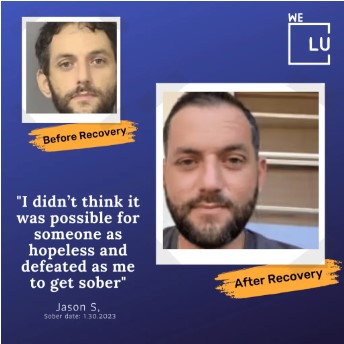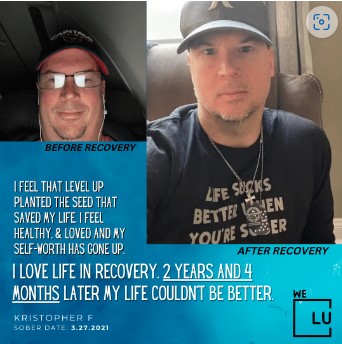Recognize withdrawal symptoms
As you take control of your recovery, enrolling in a compassionate suboxone detox program can ease your transition off opioids safely. Understanding withdrawal is the first step toward lasting change. Opioid withdrawal can feel overwhelming, with both physical and psychological symptoms demanding attention. Recognizing these warning signs prepares you to seek the comprehensive care you deserve.
Physical withdrawal effects
When you stop using opioids abruptly, your body reacts with a cascade of uncomfortable symptoms. Common physical signs include:
- Muscle aches and cramps
- Abdominal pain, diarrhea, nausea, vomiting
- Excessive sweating and chills
- Runny nose and watery eyes
- Insomnia and fatigue
These symptoms often peak between 48 and 72 hours after your last dose and may persist for several days. Left unmanaged, they can push you back toward use. Medications can be helpful in the detoxification stage to ease cravings and physical symptoms during Suboxone detox programs and other protocols [1].
Psychological withdrawal challenges
Alongside physical distress, you may face:
- Intense anxiety and restlessness
- Irritability and mood swings
- Depression and tearfulness
- Drug cravings that feel uncontrollable
These emotional responses are a result of your brain adapting to the absence of opioids. As a result, you may feel overwhelmed or hopeless. A supportive environment and tailored treatment programs can help you navigate these challenges while preserving your motivation for recovery.
Fentanyl-related dangers
Fentanyl’s potency and variability heighten both withdrawal severity and overdose risk. Even trace amounts can trigger profound symptoms or accidental overdose. As a result, professional detox with medical supervision is crucial. Attempting to detox alone exposes you to unpredictable dangers, underscoring the need for a structured Suboxone detox program or other medically assisted options.
Explore detox program options
Deciding on the right detox environment is a vital part of your journey. Programs vary in intensity, setting, and access to medical care. Selecting the format that matches your unique challenges ensures you receive the support necessary for lasting recovery.
Inpatient medical detox
In an inpatient medical detox model, you live on site under 24-hour supervision. This setting provides:
- Continuous monitoring by physicians and nurses
- Access to medication-assisted treatment (MAT)
- Immediate response to severe withdrawal symptoms
- A supportive environment free from triggers
For many, a residential setting is the safest path forward. Our opiate detox center specializes in personalized Suboxone and buprenorphine protocols, blending comprehensive care with a nurturing atmosphere.
Outpatient detox models
If you have strong social supports or responsibilities at home, outpatient options may suit you. Key features include:
- Daily or weekly clinic visits
- Flexibility to continue work or family commitments
- MAT adjustments based on your progress
- Structured check-ins to monitor health
While less intensive than inpatient care, outpatient detox still offers medical supervision and tailored treatment programs.
Low barrier care
Low barrier care reduces requirements that might prevent you from seeking help. This approach:
- Minimizes eligibility criteria
- Offers walk-in assessments
- Provides same-day treatment starts
- Reduces paperwork and wait times
By streamlining access, low barrier models help you engage in care promptly, removing obstacles that often delay treatment [2].
Get Help. Get Better. Get Your Life Back.
Searching for Accredited Drug & Alcohol Rehab Centers Near You? Or Mental Health Support?
Even if you have failed previously, relapsed, or are in a difficult crisis, we stand ready to support you. Our trusted behavioral health specialists will not give up on you. Call us when you feel ready or want someone to speak to about therapy alternatives to change your life. Even if we cannot assist you, we will lead you wherever you can get support. There is no obligation. Call our hotline today.
FREE Addiction Hotline – Call 24/7Compare medication-assisted treatments
Medication-assisted treatment combines FDA-approved medications with behavioral therapies. Despite evidence of effectiveness, only about 22 percent of individuals with an opioid use disorder receive medication-based care each year [3]. Exploring your options empowers you to choose the approach that fits your medical needs and recovery goals.
MOUD overview
Medications for opioid use disorder normalize brain chemistry, block euphoric effects, relieve cravings, and restore normal body functions [4]. They fall into three categories:
- Agonists (methadone)
- Partial agonists (buprenorphine, Suboxone)
- Antagonists (naltrexone)
Pharmacological treatment increases retention in treatment programs, decreases drug use and criminal activity, and reduces infectious disease transmission [1].
Medication comparison table
| Medication | Type | Dosage form | Setting | Key benefit |
|---|---|---|---|---|
| Buprenorphine | Partial agonist | Sublingual tablets/film | Office, outpatient, residential | Reduces cravings with lower overdose risk |
| Methadone | Full agonist | Oral solution/tablet | Licensed clinic | Stabilizes withdrawal, decreases illicit use |
| Naltrexone | Antagonist | Extended-release injection | Outpatient clinic | Blocks opioid euphoria, non-addictive |
Buprenorphine-based therapies
Buprenorphine attaches to opioid receptors, easing withdrawal without producing a full “high.” It can be prescribed or dispensed in physician offices, expanding access to care [2]. Benefits include:
- Office-based prescribing for easier access
- Reduced risk of misuse compared with full agonists
- Compatibility with counseling and support services
Suboxone detox protocols
Suboxone, a combination of buprenorphine and naloxone, prevents misuse while alleviating withdrawal symptoms. Protocols often begin with induction, during which:
- You must be in mild to moderate withdrawal
- A clinician administers an initial dose
- Dosage is adjusted to stabilize cravings and discomfort
Learn more about inpatient options at our suboxone detox center.
Benefits of higher dosing
Research suggests that higher doses of buprenorphine may improve treatment outcomes, including retention and reduced illicit opioid use [5]. Your individualized plan may include dose adjustments to optimize your comfort and safety.

Get Your Life Back
Find Hope & Recovery. Get Safe Comfortable Detox, Addiction Rehab & Mental Health Dual Diagnosis High-Quality Care at the We Level Up Treatment Centers Network.
Hotline (877) 378-4154Methadone maintenance programs
Methadone, a long-acting full agonist, requires daily administration at licensed opioid treatment programs. It effectively prevents withdrawal symptoms and decreases opioid use. Continuous medical supervision ensures dose stability and minimizes diversion risks.
Extended-release naltrexone
Naltrexone blocks opioid receptors, preventing any euphoric response. Administered via monthly intramuscular injections, it supports relapse prevention once you have fully detoxed. Since naltrexone is non-addictive, it offers a safe alternative for long-term maintenance.
Adjunctive detox medications
To further ease withdrawal, non-opioid medicines like lofexidine reduce symptoms such as:
- Anxiety and agitation
- Muscle aches
- Gastrointestinal distress
Lofexidine is FDA-approved to alleviate opioid withdrawal and can be integrated into your detox plan [1].
Integrate therapeutic support
Medication forms the foundation of detox, but combining it with behavioral therapies and holistic care yields the best outcomes. A supportive environment and tailored treatment programs ensure you address all facets of addiction.
Behavioral therapy approaches
Evidence-based methods help you reshape thought patterns and coping skills:
- Cognitive-behavioral therapy identifies and challenges negative beliefs
- Contingency management rewards progress with incentives
- Motivational interviewing enhances your readiness for change
These strategies empower you to manage triggers, reduce relapse risk, and build resilience [6].
Group and family support
Recovery thrives in community. Group therapy and family counseling:
- Foster accountability and mutual encouragement
- Improve communication with loved ones
- Address co-occurring mental health concerns
By working through interpersonal dynamics, you create a network of allies invested in your success. After detox, transition into a suboxone rehab program that emphasizes peer connection and shared experiences.
Holistic wellness practices
A comprehensive care plan often includes:
- Yoga and mindfulness meditation for stress reduction
- Nutritional guidance to restore physical health
- Exercise programs to boost mood and energy
- Art or equine therapy for creative expression
These complementary therapies support your physical and emotional healing, offering balance during a challenging time.
Prepare long-term recovery
Detox marks the beginning of your journey, not the end. Planning for sustained sobriety involves structured aftercare, ongoing support, and strategies that keep you moving forward.
Relapse prevention strategies
Building a relapse prevention toolkit equips you to handle high-risk situations:
- Identify personal triggers and warning signs
- Develop healthy coping mechanisms (journaling, exercise)
- Establish an emergency plan with trusted contacts
- Continue regular therapy or support group attendance
Proactive planning reduces the likelihood of setbacks and reinforces your commitment to recovery.
Continuum of care models
A smooth transition from detox to rehabilitation enhances stability. Continuum of care may include:
- Partial hospitalization or intensive outpatient programs
- Sober living homes with peer oversight
- Aftercare check-ins and alumni events
This stepped approach ensures you receive the level of support you need at each stage.
Peer support networks
Connecting with others who share similar experiences creates empathy and accountability. Options include:
- 12-step meetings
- SMART Recovery groups
- Peer mentoring programs
Ongoing engagement with a recovery community fosters belonging and reminds you that you are not alone.
Learn more about sustaining progress in our heroin rehab program.
Choose the right center
Selecting a facility that aligns with your needs and values lays the groundwork for success. Consider key factors that ensure quality care and personalized service.
Key selection criteria
When evaluating centers, look for:
- Accreditation by recognized bodies (e.g., The Joint Commission)
- Certified medical and clinical staff experienced in addiction medicine
- Tailored treatment programs addressing co-occurring conditions
- A supportive environment that acknowledges your unique challenges
Visiting campuses or scheduling a virtual tour can reveal whether the atmosphere feels nurturing and safe.
Insurance and payment options
Most detox programs accept private insurance, Medicaid, or Medicare. Key steps:
- Verify coverage for MAT and inpatient stays
- Confirm out-of-pocket costs and copay requirements
- Explore sliding-scale fees or scholarship funds if needed
Our admissions team can guide you through benefits verification to minimize financial stress.
Scheduling an assessment
An initial evaluation determines your medical and psychological needs. During this assessment you will:
- Review your substance use history and withdrawal risk
- Discuss any co-occurring mental health concerns
- Develop an individualized plan with specific goals
For specialized care, consider our buprenorphine detox center, where compassionate experts guide you through each phase.
Take the next step
Deciding to seek help is a brave act of self-care. By taking these concrete steps, you move closer to reclaiming your health and well-being.
Contacting admissions
Reach out to a dedicated admissions specialist to discuss:
- Program availability and start dates
- Customized care options for your unique challenges
- Any questions about medication protocols or therapy offerings
Verifying insurance benefits
Have your insurance card handy when you call. Our team will:
- Confirm your coverage details
- Explain any preauthorization requirements
- Outline potential copays or deductibles
This transparent approach ensures you feel confident about costs before you begin.
Starting your care plan
Once admitted, you will:
- Meet with medical staff for baseline labs and vital checks
- Begin a tailored MAT regimen
- Engage in individual and group therapy sessions
- Collaborate on a comprehensive aftercare strategy
Every step is designed to support necessary for lasting recovery, empowering you to build a healthier future.
By choosing a compassionate Suboxone detox program and embracing comprehensive care, you can overcome opioid dependence and rediscover hope. Take the first step today toward a life of stability and wellness.
References
- (National Institute on Drug Abuse)
- (SAMHSA)
- (National Institute on Drug Abuse)
- (SAMHSA)
- (National Institute on Drug Abuse (NIDA))
- (NIDA)
Experience Transformative Recovery at the We Level Up Treatment Center.
See our authentic success stories. Get inspired. Get the help you deserve.



Start a New Life
Begin with a free call to an addiction & behavioral health treatment advisor. Learn more about our dual-diagnosis programs. The We Level Up treatment center network delivers various recovery programs at each treatment facility. Call to learn more.
- Personalized Care
- Caring Accountable Staff
- Comfortable Amenities
- Licensed & Accredited
- Renowned w/ 5-Star Reviews





